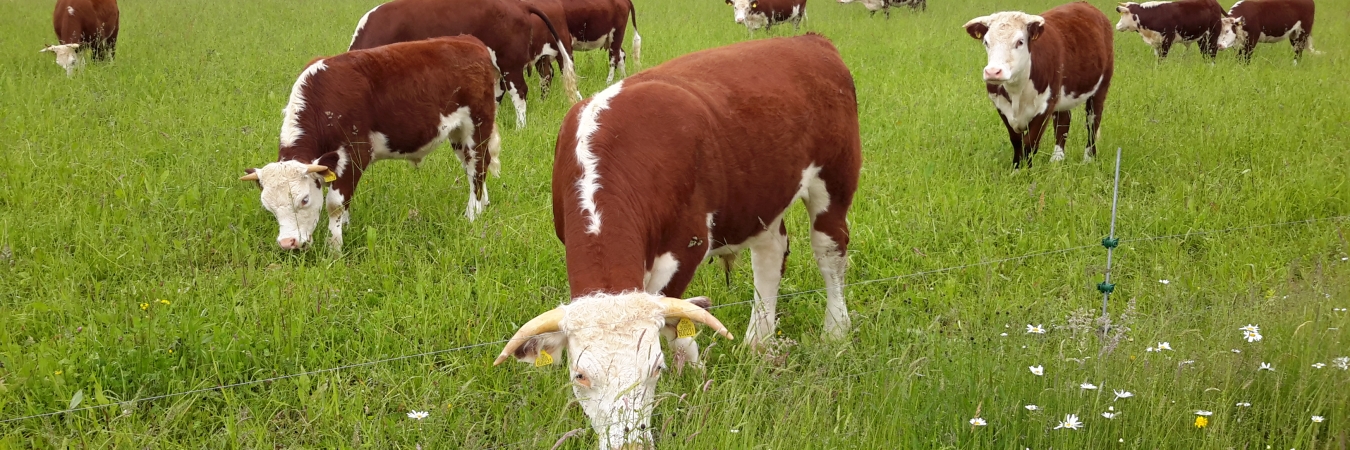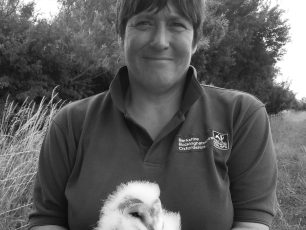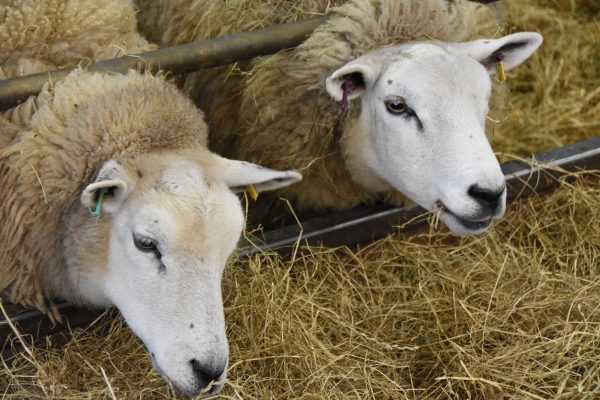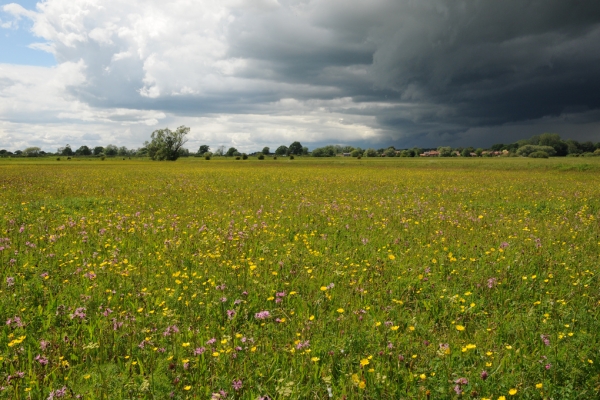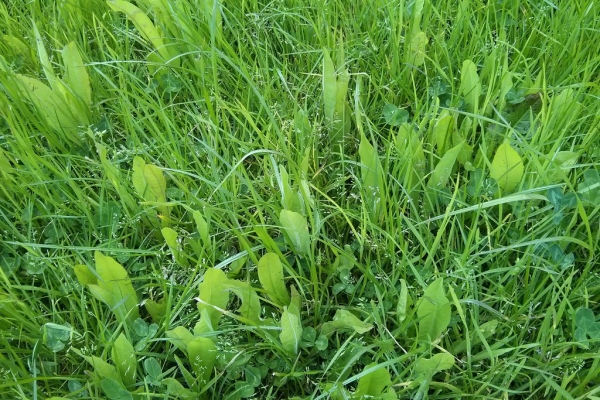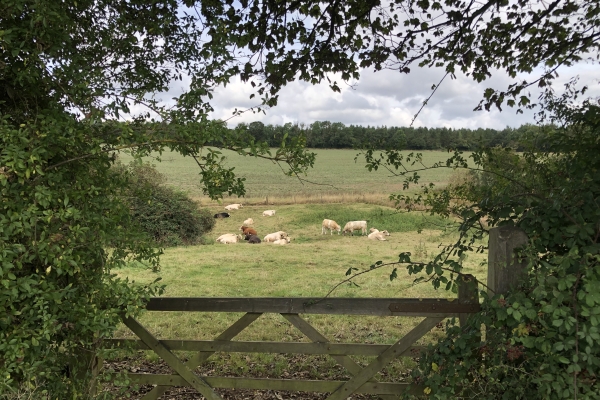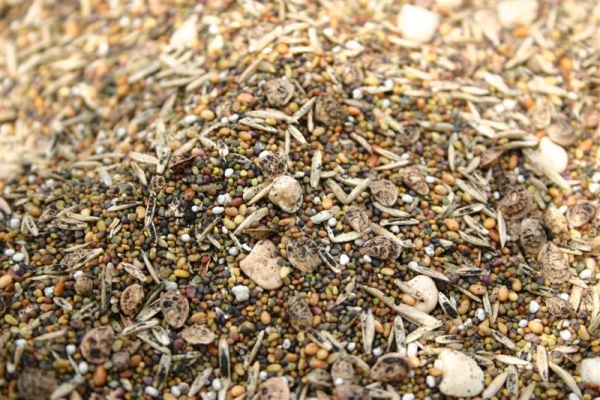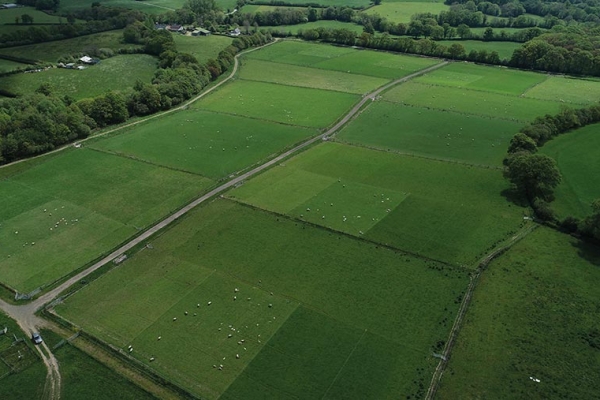Conservation Grazing at Chimney Meadows Nature Reserve
Louise King, Reserve Manager at Berks, Bucks and Oxon Wildlife Trust‘s Chimney Meadows Nature Reserve, explains how they are using low-input livestock breeds to manage their grasslands for wildlife, forage and flood attenuation.
- Fields at Chimney have been reverted from arable to species-rich hay meadows using grass from the adjoining National Nature Reserve. Louise explains that a method called green hay spreading was used to achieve this.
- Green hay spreading involves minor cultivations of the field and then the green hay from another field is spread on using muck spreaders. In the first year or two the field will be topped or grazed to allow the grass to establish. Once established, hay crops can be taken, followed by aftermath grazing.
- Hay meadows may take up to 25 years to reach a mature state.
- Neighbouring farmers who are in stewardship schemes have taken green hay from Chimney to establish species-rich meadows on their own land.
- One of the most important species to help establish a hay meadow is yellow rattle. This is semi-parasitic, living off the nutrients on grass roots and reducing their competitiveness. This allows other species in the sward to compete with the grass, increasing the diversity of the sward.
- Other common species in the hay meadow sward include: vetch, meadow vetchling, birdsfoot trefoil, hawkbits, cowslips, buttercups, plantains, orchids and a mix of meadow grasses such as cocksfoot and meadow foxtail.
- Louise explains that they breed small flocks of Beulah sheep and Hebridean sheep at Chimney, as well as a small herd of Dexter cattle. These are used across the three counties (Berks, Bucks and Oxon) to assist with conservation grazing. The reason Louise has chosen these breeds for Chimney is because they are well suited to graze grassland with lower nutrients and also scrub that might otherwise encroach on the hay meadow sward. These breeds are very able to thrive on low-input grazing.
- Most of Chimney is adjacent to the River Thames and so plays an important role in providing storage for flood water in times of heavy rain, slowing the flow towards Oxford and on to London.
- Louise works with local farmers who bring their stock to Chimney for summer grazing. This means that in the winter when the fields are often flooded, Louise has less stock to find dry land for.
- Louise strongly believes that the diversity of species in the hay meadows is better for the animals than a less diverse sward.
About Chimney…
Chimney Meadows nature reserve is one of the largest reserves managed by the Berks, Bucks & Oxon Wildlife Trust. Since the Trust started looking after the site in 2003, wildlife has returned to this tranquil site beside the River Thames in Oxfordshire. Formerly a commercial farm, the fields once planted with wheat and barley are now colourful, species-rich wildflower meadows. Previously heavily grazed pastures are now nationally-important wetlands and home to wading birds. This type of habitat is important for its remarkable diversity of plant-life and as a home to nationally declining wading birds such as curlew, which breed here. As part of the Trust’s work on Valuing Nature it is assessing the financial value of the benefits to society of converting Chimney Meadows from a commercial farm to a nature reserve.
Learn more:
Natural England have some really useful technical information notes on grassland restoration, enhancing swards, using yellow rattle, species-rich green hay, and arable reversion to species-rich grassland, some of which you can find on Agricology:
- ‘Sward enhancement: choice of methods’
- ‘Sward enhancement: diversifying grassland by spreading species-rich green hay‘
- ‘Arable reversion to species-rich grassland: Site selection and choice of methods‘
- ‘Seed sources for grassland restoration’
(Editor’s Note)
